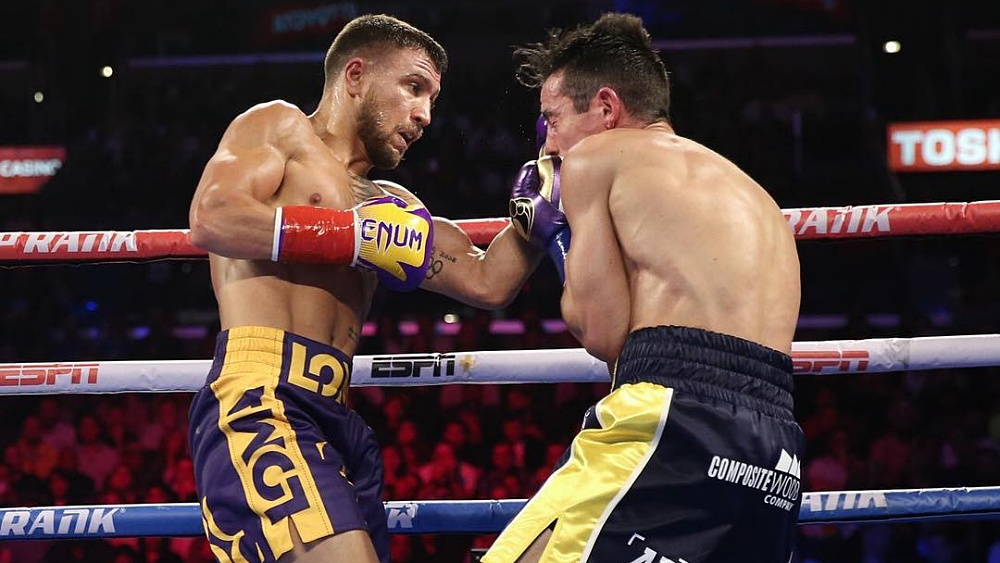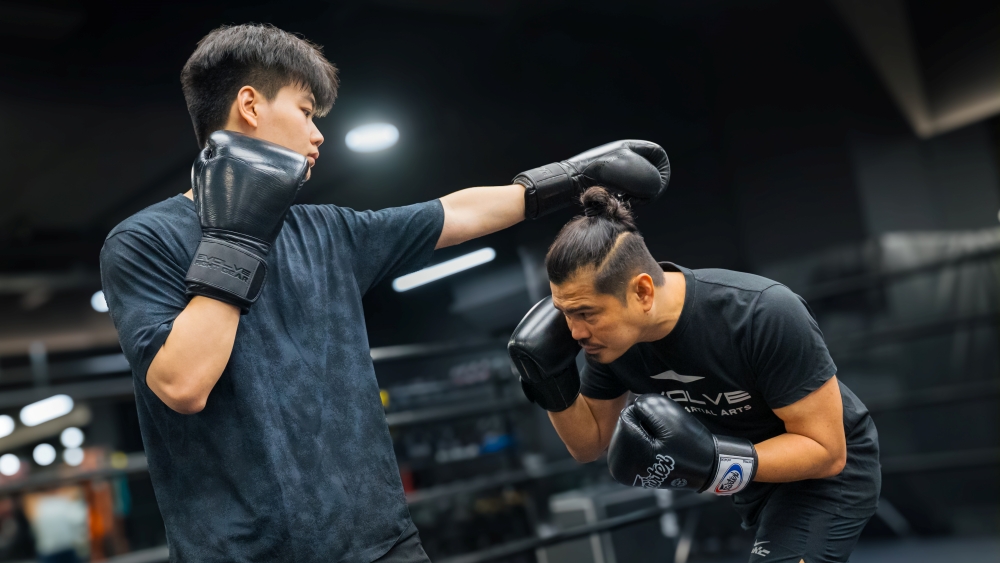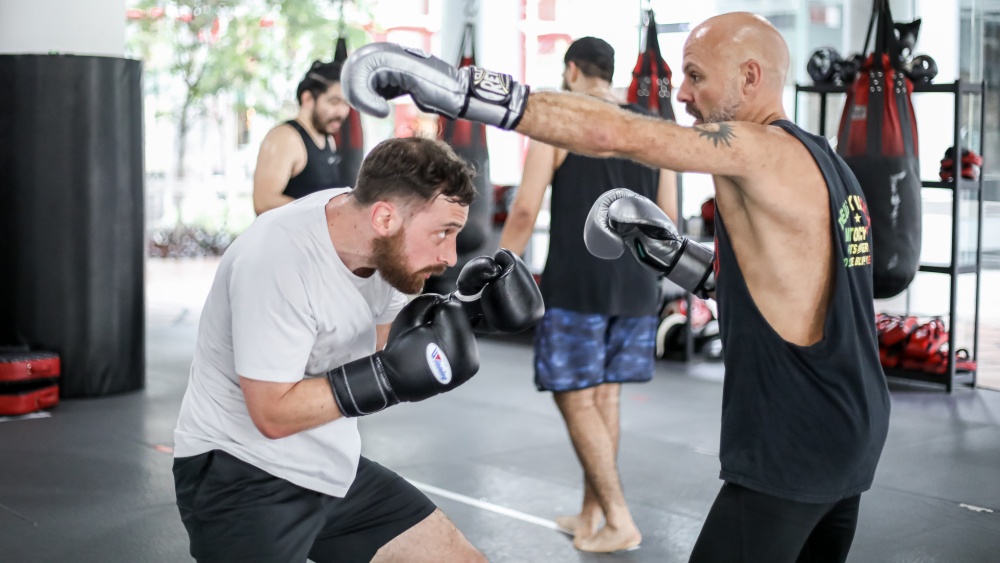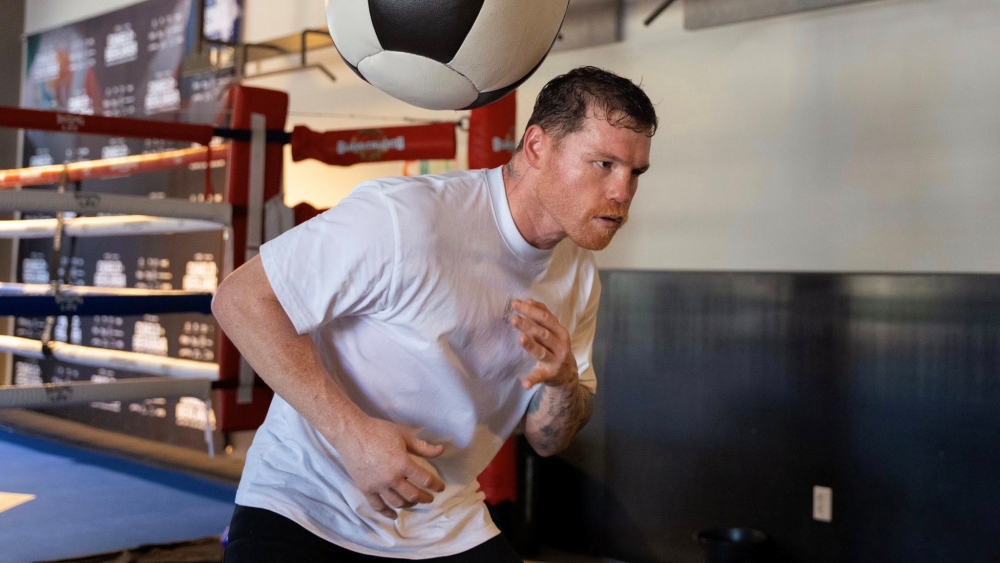The triangle slip system used in boxing is a theory that teaches you how to place yourself in positions where you can unload punches on opponents while their options are limited. The triangle theory explains how a boxer can create an advantageous position where they attack their opponents from 45-degree angles.
The system explains why slipping punches and countering from angles can be so effective inside the boxing ring.
Mastering The Triangle Slip System
The triangle theory isn’t something boxers actively think about during fights. The ability to create these angles is an instinct fighters develop based on years of practice. Triangles aren’t the only shapes used to explain concepts in the sweet science of boxing; there are also diamond, hex, and many other shapes that are used to explain positional theories.
A simple way to visualize the triangle theory is to imagine two boxers, A and B, inside a ring facing each other. Now, draw an equatorial triangle with Fighter A standing on a point, while Fighter B is trapped in the middle. Invert the triangle and you’ll notice Fighter B is now at a point, while Fighter A is in the middle.
When two boxers square up against each other, each fighter is standing at a point on the triangle while their opponent is trapped inside. Either fighter can establish an advantageous position by moving to either side of the triangle, limiting the attacks the boxer in the middle can throw back at them while opening up their offensive options.
The illustration above shows the idea behind the triangle slip system. Our boxers are the two oval dots and the purple boxes are the advantageous positions you want to counter from as a boxer. This is typically done by slipping a punch to move your head off the centerline and using your footwork to reposition your body.
As a boxer, you’re always at one of the points of the triangle while your opponent is in the middle when you’re square to each other. This isn’t an advantageous position since you and your opponent can both use the same punches and defensive techniques. However, it makes it easy for you to easily transition to the sides of the triangle with your head movement and footwork, which gives you the positional advantage. It is especially advantageous when you have an opponent trapped against the ropes, limiting their positional choices.
The triangle slip system acts as a tool that helps boxers understand how range and positioning work. Boxers often become better at slipping punches and countering once they develop an understanding of how to work these imaginary triangles inside the ring.
Gaining Advantages With Outside Angles
A boxer will always have the advantage, as long as their opponent remains in the center of the triangle, once they start moving along the lines. Attacking from angles that are away from your opponent’s direct line of vision, makes it harder for opponents to block or evade incoming punches.
Manny Pacquiao is a great example of a boxer who excels at moving along the sides of the triangle while keeping opponents trapped inside. He often uses movements to create angles away from his opponent’s line of sight and uses the opportunity to land powerful punches on them. Vasyl Lomachenko is another boxer who has an excellent understanding of the triangle theory. Referencing from the same video as above, at 2:11, understand how these famous boxers have been using the outside angles to their advantage whenever they are in the ring.
Moving along the lines of the triangle allows you to throw punches with either hand while preventing your opponent from throwing effective strikes.
The triangle slip system works best for boxers who prefer to counter-punch. This is because the theory works optimally when your opponent is throwing punches at you. Move without any punches coming your way, and there’s a good chance you become the fighter trapped inside the triangle. It should be noted that fighters like Lomachenko often break this rule and get away with it due to their high-level understanding of angles.
Applying The Triangle Theory
As we mentioned above, the triangle theory isn’t something boxers actively think about during their bouts. It’s a training tool designed to help you understand how angles work. Keep the theory in mind when sharpening your skills through activities like shadowboxing and heavy bag work to make creating these angles part of your muscle memory, something that you instinctively do when you’re inside the ring.
People who understand the sweet science know how important angles are. Every movement a boxer makes inside the ring dictates the offensive and defensive options they have at their disposal and seasoned boxers use angles to give themselves positional advantages.
Study some of the boxers at the top of the sport and you’ll notice they prefer to set up angles before attacking. Angles keep you safe from your opponent’s most powerful punches while putting you in a position to attack them with any strike you choose.
The boxers who excel at creating angles tend to be equally as good at putting opponents on their backfoot. These fighters are often defensively sharp as they use their footwork to create angles and they constantly force their opponents to readjust to counter their movements. These moments create opportunities to land hard punches.
Constantly changing angles makes it harder for opponents to keep track of you and it gives opponents one more thing to worry about.
Make The Triangle Slip Theory Part Of Your Fighting Style
The triangle slip system is a scholastic concept that helps you understand the importance of creating angles while countering to maximize the effectiveness of your punches.
Don’t make it more complicated than it needs to be, it’s simply about moving off the centerline and attacking your opponent from their sides instead of taking them head-on. Once you have the triangle theory down, move on to more complex theories like the diamond theory. Understanding these concepts will improve your ability to create advantageous angles with your head movement and footwork.
The ideas behind the triangle theory are regularly used by boxers at all levels and it’s one of the fundamental concepts that separate novices from experienced boxers.
You may also like:
Boxing’s Return To Prominence: The Resurgence Of The Sweet Science In The Modern Era

















